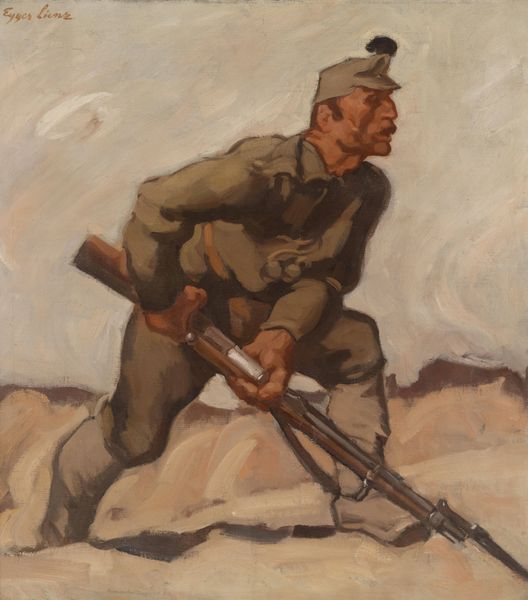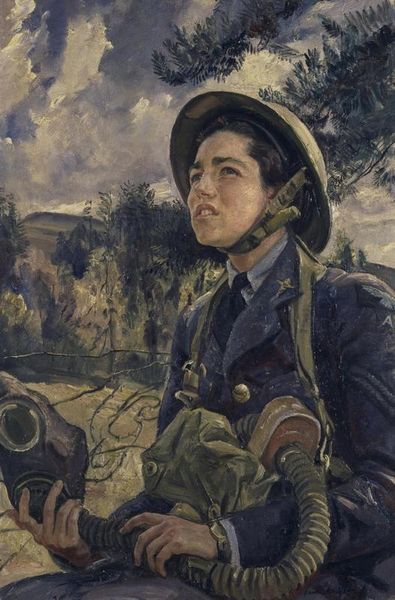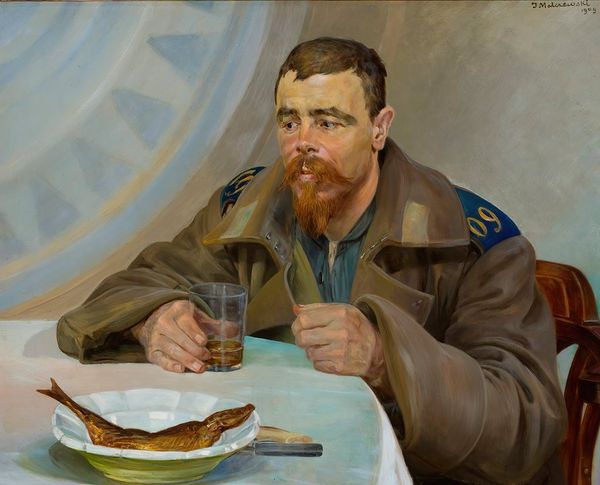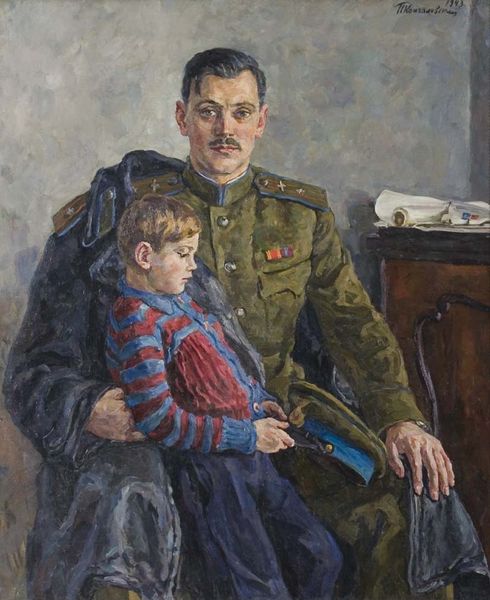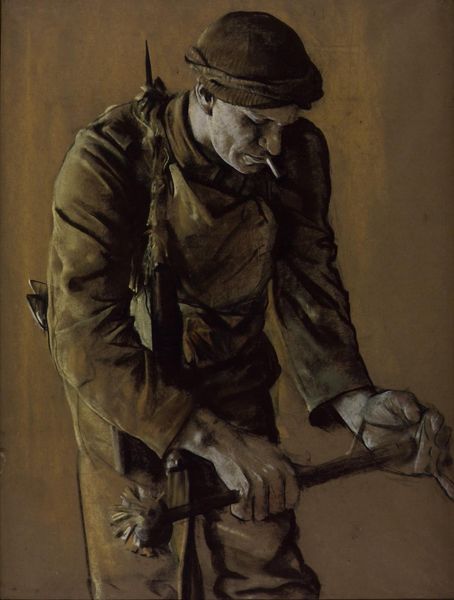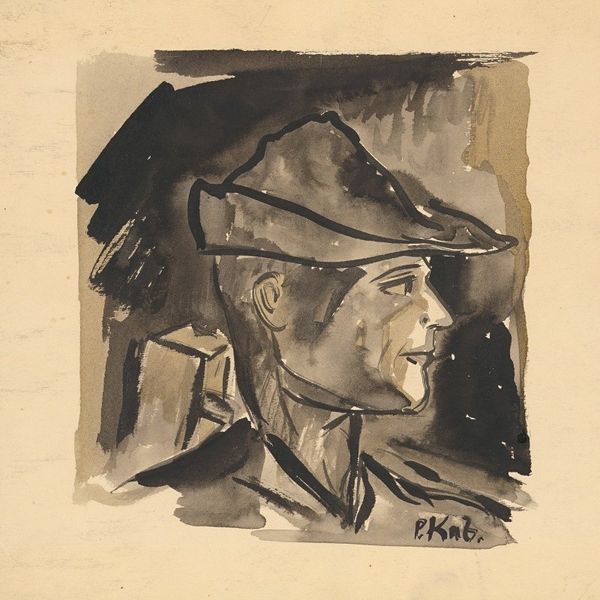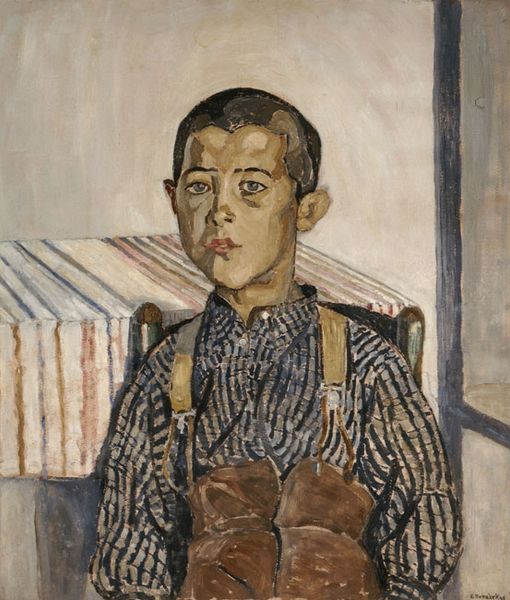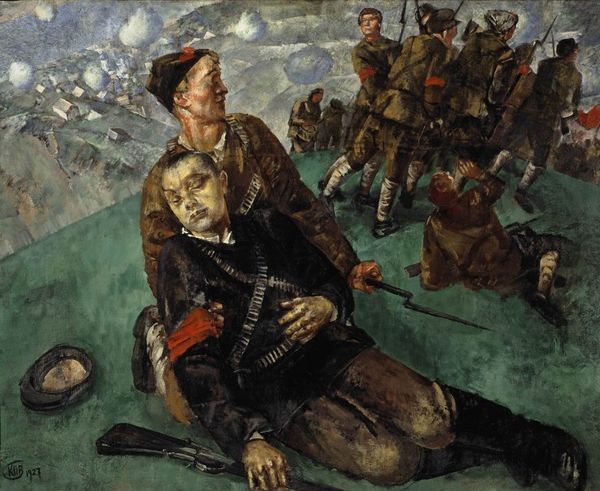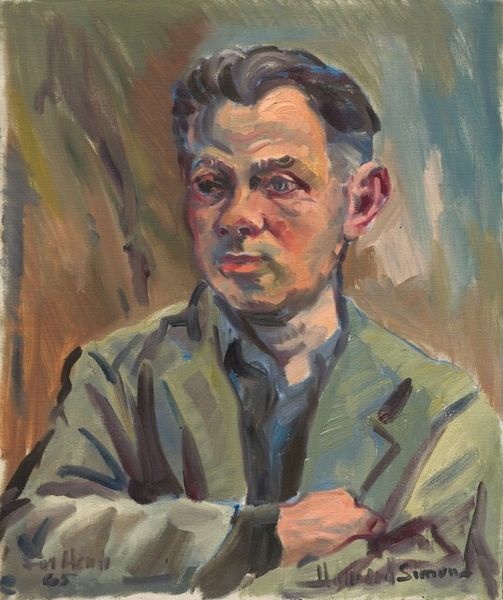
Copyright: Modern Artists: Artvee
Curator: Here we have Norman Rockwell's "Willie Gillis in Church," painted in 1942. What are your first thoughts? Editor: Immediately, it's the texture that strikes me. You can practically feel the coarse wool of his uniform, the smooth wood of the pew, and the subtle sheen of his garrison cap. Curator: Yes, Rockwell's masterful use of oil paint creates such tangible forms. Notice how the composition draws the eye—a gentle diagonal of bodies ascending to the upper-left of the painting—culminating in the face of Willie Gillis, thoughtful, serene. Editor: And consider the means by which those bodies arrived there: inducted through a process that renders so many young men as these figures, seemingly interchangeable except for the barest individual expression. How does this relate to broader mobilization during World War II, mass culture, even propaganda? Curator: An astute observation. Rockwell presents an intriguing study in contrasts. On one hand, he captures a uniquely American sensibility: intimate, approachable, and patriotic. On the other hand, a darker psychological aspect pervades Willie's stoic demeanor. Editor: It’s fascinating how he manipulates tone. The subdued, muted greens and browns seem so intrinsically connected to notions of wartime frugality, material constraints, and a society structured by a communal purpose. The church becomes a sanctuary—and also perhaps a place where anxieties and collective burdens become more bearable? Curator: Absolutely. The church context emphasizes the significance of introspection, reverence, and human connection amidst the upheaval of global conflict. Notice how Rockwell repeats certain colors. It gives it such a unity of appearance, while suggesting a harmony to be regained on a wider scale. Editor: Yes, seeing that particular materiality makes one think about wartime rationing of raw materials. And more widely, the labor practices and war effort required for an army, to get each man into uniform and a house of worship... Fascinating to contemplate such implications embedded within the art object. Curator: Indeed, Rockwell gives us access to that collective experience. The painting stands not only as an iconic representation of mid-century Americana, but also a testament to the complexities of war, identity, and inner reflection. Editor: A work ultimately so embedded in material circumstance—the labor and politics, the industry and social realities—but also transcendent, prompting deeper understanding of its historical context, our nation, and perhaps human nature.
Comments
No comments
Be the first to comment and join the conversation on the ultimate creative platform.
